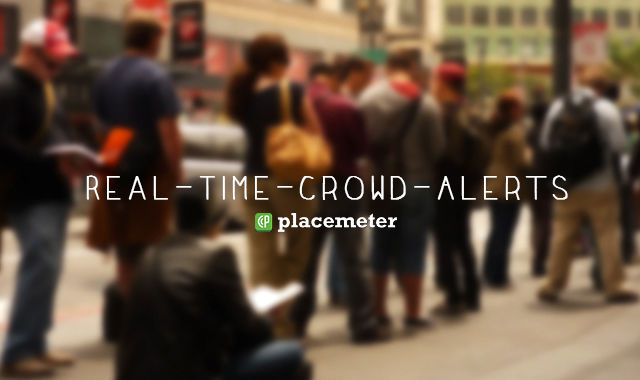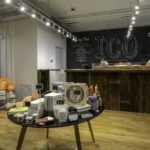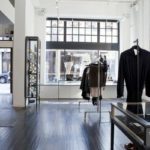If you’re an online brand just venturing into omni-channel retail, you may be unfamiliar with the ins and outs of consumer behavior in an in-store setting. This post covers four retail metrics that, if tracked, can reveal powerful insights into how your customers interact with your pop-up shop. Armed with these insights, you’ll be able to make informed decisions that drive sales, reduce overhead, and more.
1. Gauge brand awareness by counting store visits
When measuring the success of a pop-up shop, store visits actually outweigh overall revenue and sales.
Pop-Up Stores offer retailers a chance to engage their audiences. While revenue is, of course, important, exposure is the ultimate goal.
Door counts are the best way to quantify brand engagement during your Pop-Up Store. By monitoring the number shoppers walking through your doors, you’ll learn how many people in your area are interested in and aware of your brand.
Whether or not they make a purchase, these visitors have been presented with your store’s unique experiences and offerings. Because they’ve built a relationship with your brand, these people are more likely to become fans and followers now, and more likely to become loyal customers in the future.
2. Look at peaks and valleys in pedestrian activity to optimize store hours
Draw in a large amount of customers in a short amount of time to maximize revenue.
Identify trends in local foot traffic to determine the busiest hours on your street. Then identify events that may cause peaks in foot traffic, such as farmers markets and street fairs. Adjust accordingly for maximum returns.
Ode a la Rose, an online florist specializing in rose bouquets, opened a Pop-Up Store in the Roger Smith Hotel. The company used Placemeter to monitor pedestrian activity on the sidewalk in front of the Pop-Up Store.
Weekday store hours are shown here in light gray, and weekend store hours are light green.
51.6% of the total sidewalk traffic passing by the store occurs while the store is open during the week, and only 45.9% of total traffic passes during open hours on the weekend.
By shifting store hours one hour later on weekdays and one hour earlier on weekends, the store could increase the number of pedestrians passing the open store to 59.1% on weekdays and 53.2% on weekends. They would increase their potential customer base by 14.5% on weekends and 15.9% on weekends!
3. Calculate your walk-in rate to find best practices for turning pedestrians into shoppers
Your walk-in rate, or street-to-store conversion rate, is the proportion of pedestrians who become shoppers.
Walk-in rate is a powerful new metric that tells you which sales, events, and marketing campaigns make your store most profitable, and when. It brings you beyond basic door counts by giving you the ability to understand the impact of the outside on the inside.
You can use your walk-in rate to get quick feedback on signage and visual merchandising.
Say 200 people walk by your store in one day, and 50 of those people enter. The next day, the merchandising team redesigns the storefront. 500 people walk by and 100 people enter.
Isolated door counts would show an increase in store visits. But the walk-in rate would show that the street-to-store conversion actually decreased, from 25% to 20%. You would be able to pivot your merchandising and operations plans back to their original strategy.
With your walk-in rate, you’ll be able to adjust your existing campaigns in real time and plan better campaigns for your next pop-up.
4. Find hot spots to measure which layouts work best
Analyze the customer journey to provide your shoppers with the best possible experience
Your table displays and in-store signage guide customers through your brand experience. You can monitor activity around each area to determine which layouts and designs provide consistently satisfying experiences.
This analysis is necessary if your shop is on multiple rooms or floors. A lack of customers in hidden or hard to reach areas prevents you from sharing your full experience with your audience. But once you’ve identified sticking points, you can easily add signage or rearrange partitions to provide your customers with a better journey.
Restaurant Pop-Ups need to pay special attention to layout and floor plans. Customers need to be comfortable in their seats, and you need to be sure you can provide everyone with ideal locations.
Take your measurement one step further and look at dwell times. You’ll be able to determine whether shoppers are interacting with your brand, or merely walking by. If the latter, you can rearrange the display or change your message to better engage your customers.
Want to start tracking your retail metrics?
Placemeter makes it easy for you to quantify activity in and around your Pop-Up Store. You can use the data to reduce utility costs, optimize staffing, and measure the impact of visual merchandising.
- Pop Up 101: How To Design Your Pop-Up Store Layout - September 7, 2020
- 5 Reasons Why Your Brand Should Host a Holiday Pop-Up Store - December 10, 2017
- 4 Ways To Capitalize On The “Retail Crisis” in NYC - August 4, 2017






